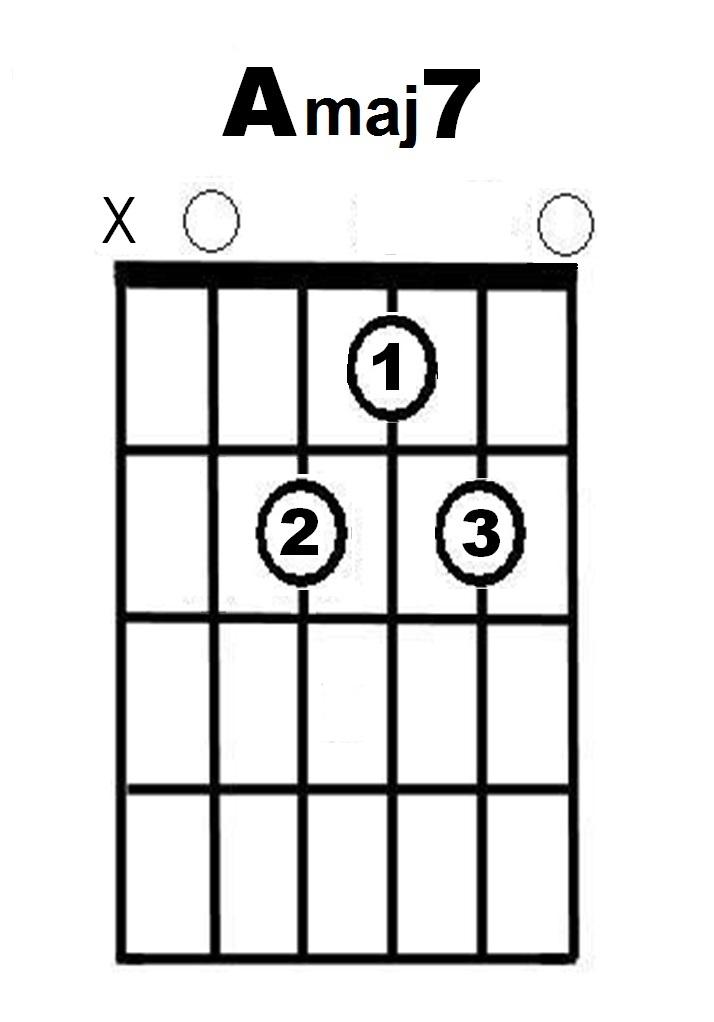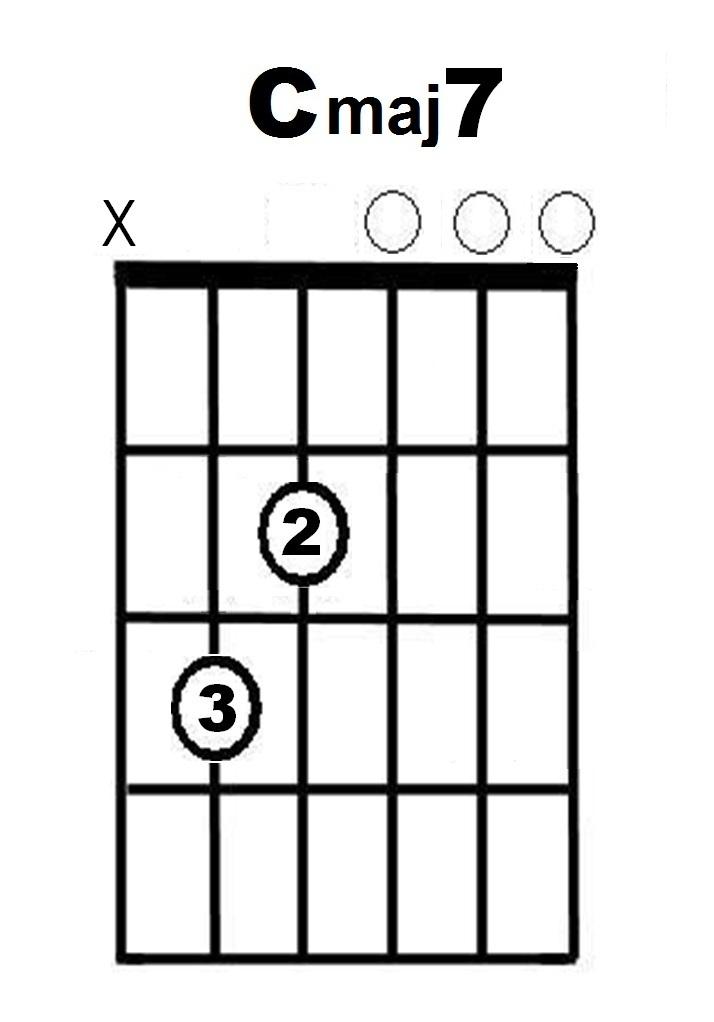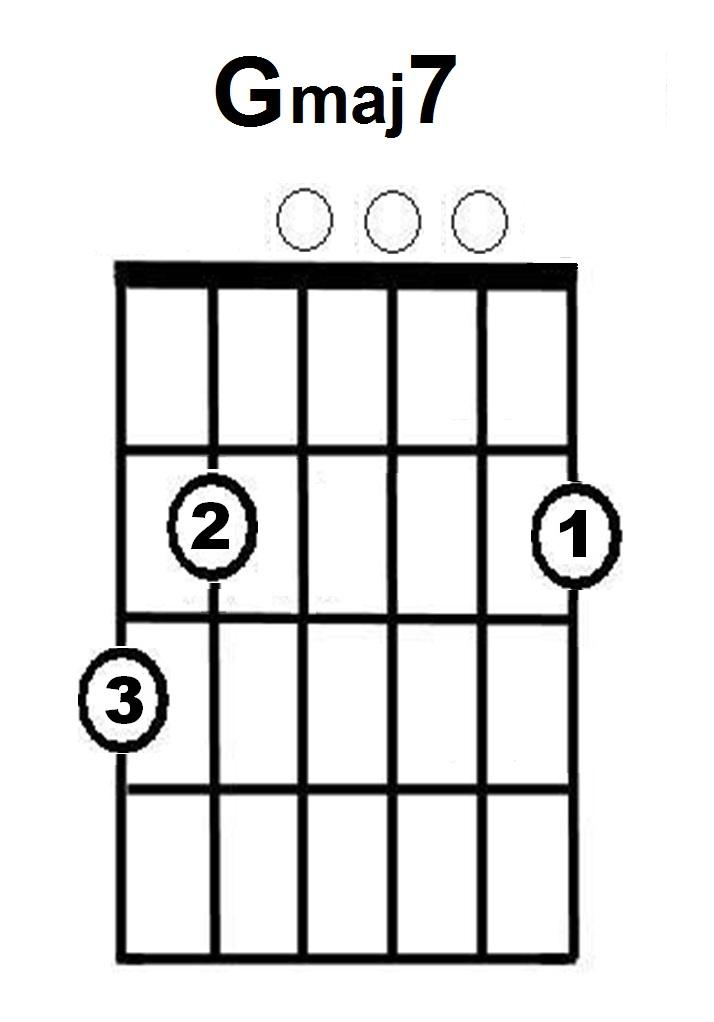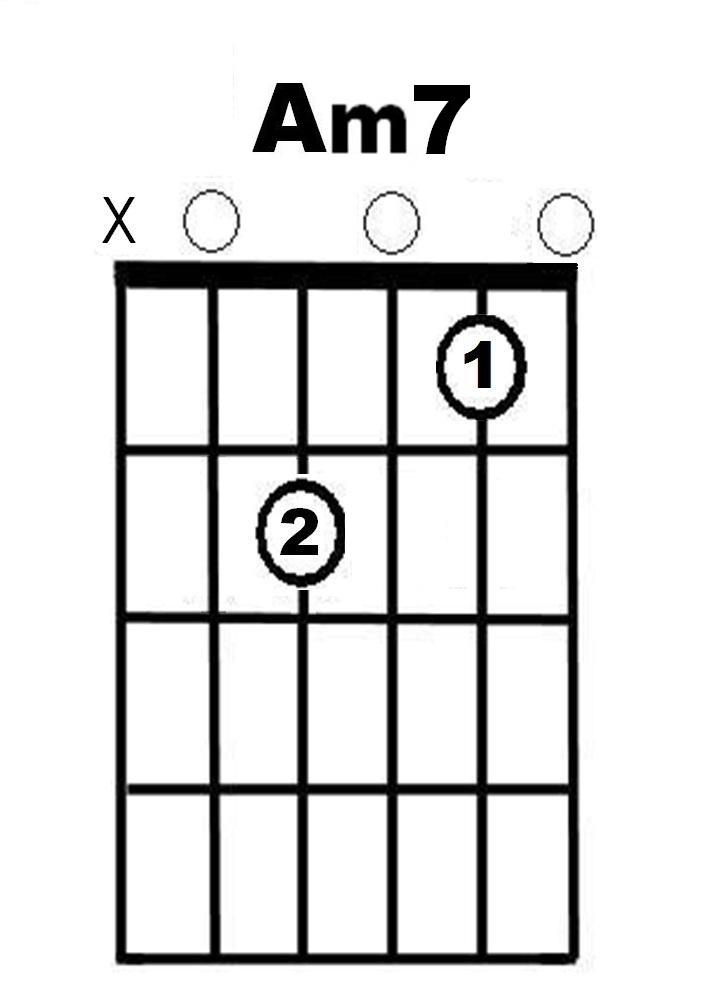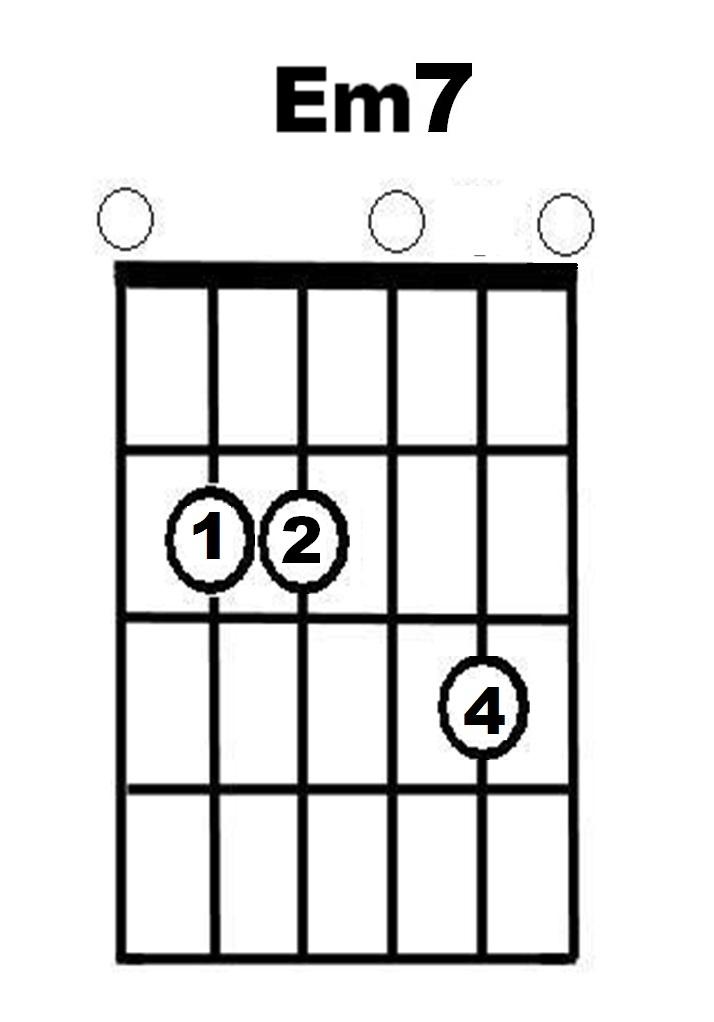Jazz Chords
Spotlight on Jazz
In jazz, chords are often extended by adding notes above the basic triad. The "seventh" and "ninth" scale degrees are frequently added to major, minor, and dominant chords to create more colorful harmonies.
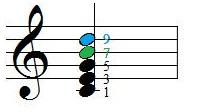
Common chord progressions in jazz often differ from those found in other styles of music.
Major Seventh Chords
Major seventh (maj7) chords are used frequently in jazz. The unique quality of these chords is especially pleasing to the listener. Practice playing the following major seventh chords, and listen to their similar quality.
Select the icon to see and hear the Amaj7, Cmaj7, Dmaj7, and Gmaj7 chords played on the guitar.
|
|
|
|
|

The Dmaj7 chord can be fingered with a "barre." With this technique, the first finger covers three strings.
Select the icon to see and hear the Dmaj7 chord played with the barre technique. ![]() (Text Version)
(Text Version)
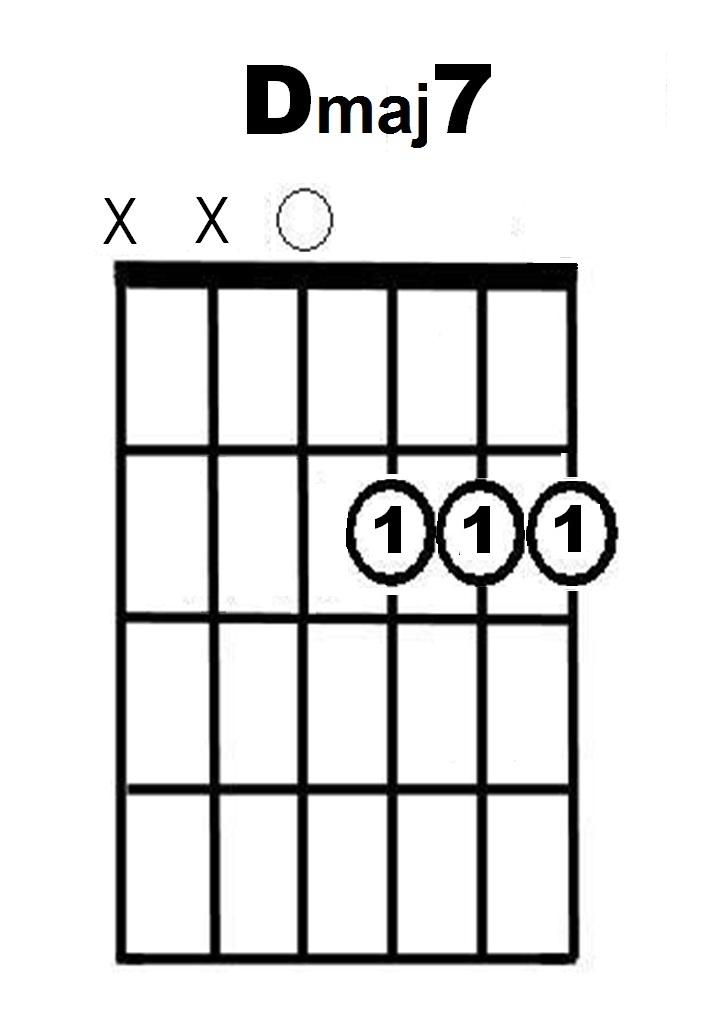
Minor Seventh Chords
Minor seventh (m7) chords are also used frequently in jazz. Practice playing the following minor seventh chords.
Select the icon to see and hear the Am7 and Em7 chords played on the guitar. ![]() (Text Version)
(Text Version)
|
|
|
Ninth Chords
Ninth chords are also commonly used in jazz. A ninth chord is a form of dominant seventh chord, with the ninth scale degree added as the top (or highest) note of the chord. Because the ninth chord extends beyond the dominant seventh chord it is considered an extended chord.
D mixolydian scale

Practice the D9 chord.
Select the icon to see and hear the D9 chord played on the guitar. ![]() (Text Version)
(Text Version)
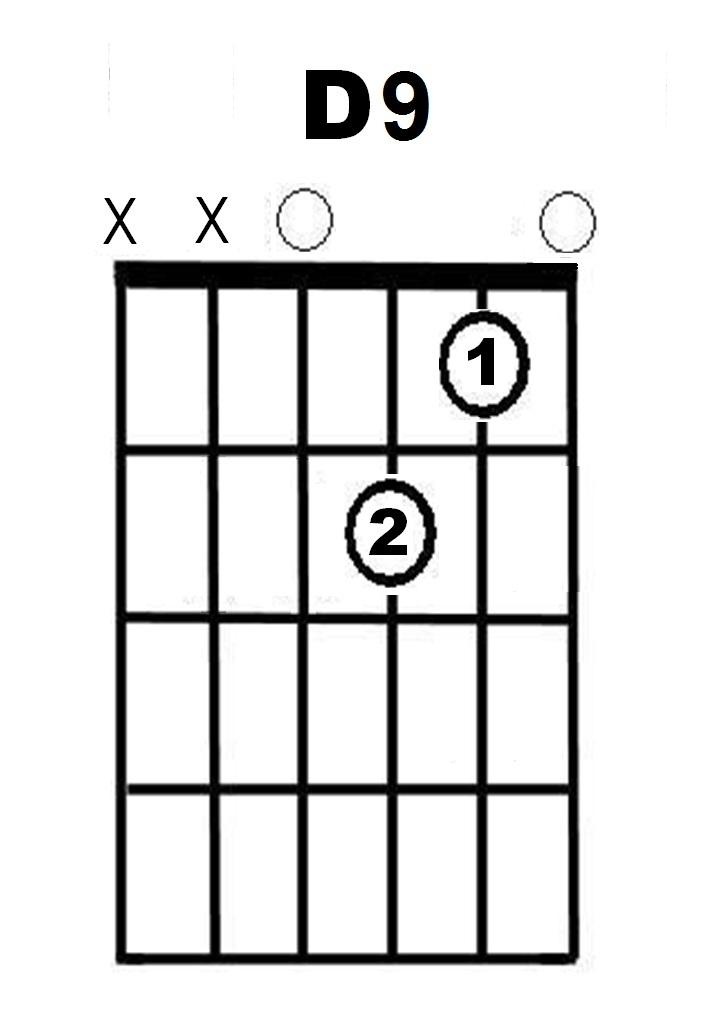
ii-V7-I Progression
In jazz chord progressions, primary chords are often replaced with other closely related chords. For example, the harmonic progression IV-V7-I is frequently used in many styles of music. In jazz, the ii chord is commonly substituted for the IV chord in this progression, resulting in a slightly different color (or feel) to the harmonic movement. The ii-V7-I chord progression is one of the most frequently used in jazz. Practice strumming the following chord progressions.
First, play the traditional IV-V7-I progression in the key of G major.

Now play the progression substituting the ii chord (Am) for the IV chord (C).

Now play the progression adding the color tones you have learned in this lesson.
Select the icon to see and hear the ii-V7-I progression played on the guitar. ![]() (Text Version)
(Text Version)

Select the audio icon to hear the chord progression played on the guitar.



